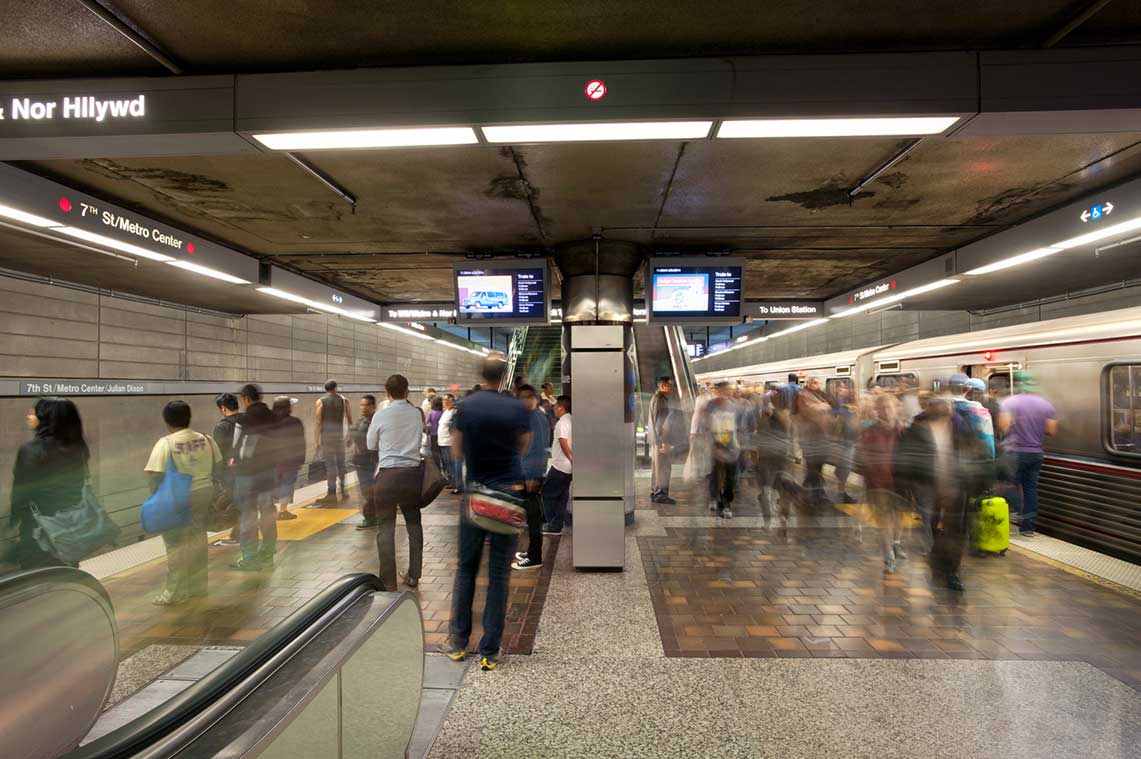
The recent onslaught of terrifying attacks and threats worldwide has led to the public’s heightened awareness and demand for rigorous security.
For public transportation in metropolitan areas like Los Angeles, the threat can be incredibly high due to the large volume of people and constant busyness of the city. Fortunately, the Los Angeles County Metropolitan Transportation Authority (LA Metro) is committed to the safety of their riders and has explored options to facilitate it. On August 16th, the LA Metro launched a pilot program to test new full body scanners in their subway systems that scan for “mass casualty threats” like firearms or explosives.
WHAT IS THIS NEW TECHNOLOGY AND HOW DOES IT WORK?
These scanners, developed by Evolv Technology, look and function similar to their airport counterparts, except with wheels attached to the bottom for easy maneuverability and “…for random screenings when needed”, says LA Metro Spokesman Dave Sotero. The portability of these machines allows LA Metro the flexibility to use them at a moment’s notice. Commuters simply step in between the silver columns, and short-wave radio frequencies scan them in real-time for any patterns that may suggest imminent danger: “The technology enables the system to locate on the body where there is a potential threat, and it appears on a video screen,” Sotero describes. Officials are immediately notified so that they can take action before any harm can actually be done. The scanners also have facial recognition capabilities, but were not used during the pilot program.
HOW WILL THIS NEW TECHNOLOGY AFFECT COMMUTERS?
The 2-day pilot program, which occurred on August 16th and 17th in Union Station at the Metro Red Line, will serve as the basis for LA Metro’s decision to pursue this new technology. The scanners alone cost $60,000; LA Metro Security Executive, Alex Wiggins, states, “The technology would likely be held in reserve for days when security officials suspect a heightened risk of attack.” If it is adopted, those who use LAMTA services will not see a major shift in their commute. These scanners will not require riders to remove their shoes or belts, or laptops, keys, and phones from their bags or pockets, shortening the time needed to pass through the scanners. Additionally, these scanners address former technologies’ inability to handle rush-hour crowds; these scanners were made to accommodate 600 riders per hour to avoid any delays or missed connections. “The idea is that you have a continuous flow of people through the security system without causing a backlog and causing people to miss their trains,” states Sotero.
LA Metro’s use of technology to provide safe and efficient public transportation is a deliberate, ongoing effort to better serve the Angeleno community. Joe’s Auto Parks’s recent partnership with LA Metro is just one example of how they’re enhancing their experiences–before the riders even get to the queue. With the possibility of this new technology becoming a part of LA Metro, the organization itself is bound for increased ridership and higher customer satisfaction. “We want to always be looking at the horizons for the newest technologies that are going to help improve safety on the Metro system, so this is the type of technology that we’re looking at now”, says Sotero.

Comments are closed.